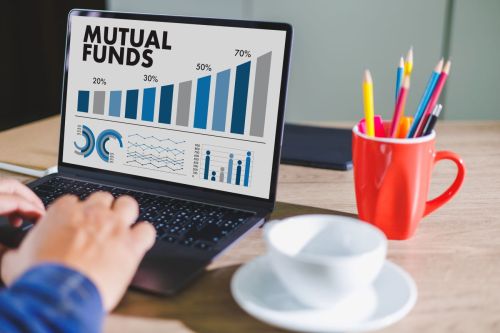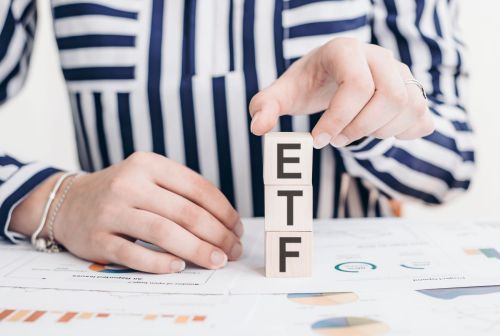You might have seen movies such as The Wolf of Wall Street or The Big Short that make the stock market seem like a pretty wild place (especially with actors like Leonardo DiCaprio or Brad Pitt delivering over-the-top Hollywood performances). But these films don’t actually teach us a lot about this real-world financial arena.
The stock market is a marketplace where stocks, which are units of ownership in a company, are bought and sold (it’s right there in the name!). But what exactly happens on the market—and how everything works—can seem mysterious, especially in the 21st century, when technology (as opposed to Leo and Brad) plays a big part.
A basic understanding of central concepts, like stocks and shares, markets and exchanges, and the process behind trading, will help you demystify the world of the stock market for kids. It may even spark an early interest in saving and investing for teens (and goes a long way in explaining some of those Wall Street movies, too!).
Key takeaways
- The stock market is a marketplace for buying and selling stocks. It is made up of multiple stock exchanges.
- Owning stock entitles you to privileges, like dividends, voting rights, and capital appreciation.
- The Toronto Stock Exchange (TSX) is the biggest exchange in Canada and the third largest in North America.
- Stock prices are determined by supply and demand, but other factors may cause prices to go up and down.
- Teens can buy and sell stocks once they have reached the age of majority in their province.
What exactly is the stock market?
It’s common to say “stock market” or “stock exchange” as though you’re talking about the same thing. But there’s an important difference. When you talk about a stock market, you’re referring to a collection of stock exchanges. Examples of stock exchanges are the Toronto Stock Exchange (TSX) and the Canadian Securities Exchange (CSE). This group of exchanges makes up the marketplace where stocks are bought and sold.
Read more about investing terms to know.

What are stocks?
Buying shares or stocks means you’re investing money in a company (“shares” and “stocks” used to mean the same thing, but shares are the units stocks are measured in, like kilograms). When a company “goes public,” it means that it’s willing to sell stocks to investors, usually to raise capital for the company to grow. As a stockholder or shareholder, you’re a part-owner of a company. By owning a certain amount of equity in the corporation you’ve invested in, you’re now entitled to certain privileges.
Depending on the kind and amount of stock you buy, you can be entitled to a portion of the company’s profits, called dividends, as well as the right to vote on certain corporate decisions in shareholder meetings. Plus, there’s the concept of capital appreciation: the difference between the price you purchased the stock at and its current price if it’s gone up. If the price goes up, your stock is worth more. If you decide to sell at this point, you can make a profit from that sale.
Types of stocks
Here are the two types of stock you’re mostly likely to hear about:
Common stocks
Common stocks are—you guessed it—the most common type. They’re what we talked about above: a type of stock where owners are paid dividends, and they get to vote at shareholder meetings.
Preferred stocks
Preferred stocks often don’t allow shareholders to vote, but when it comes time to pay dividends, these shareholders’ payments are prioritized over those of common stockholders. Dividends on preferred stock are generally paid out according to a schedule and at a fixed amount. The other difference between common and preferred stocks is that if a company goes bankrupt, preferred shareholders are paid out first when the business sells its assets.
Because of both of these factors, preferred stocks are considered a more secure investment than common stocks.
How are stock prices determined?
Pay even passing attention to stock market news and you’ll likely notice that stock prices tend to rise and fall frequently—sometimes only slightly, other times dramatically. Why does this happen? The answer can be complicated and involve many factors, but there’s also a short list of basic principles—namely, supply and demand.
Once stocks become available on the market, they can be bought and sold by investors. If a lot of investors are looking to buy a particular stock, this increased demand can push the price higher. On the opposite end of the scale, if a lot of investors are trying to sell a particular stock, the price can drop. High demand means higher stock prices, while low demand means lower stock prices.
The “ask” and the “bid” represent the two sides of a negotiation to set a stock price. The ask is the price the seller is willing to accept for their stock, while the bid is what the buyer is willing to pay. The price of a stock is determined when the ask and the bid are equal.

What is a stock exchange?
We touched on this above, when we were going over the difference between the stock market and stock exchanges. To recap: stock exchanges are like the TSX and others that make up the larger stock market. A stock exchange is a marketplace where traders and investors buy and sell stocks, as well as bonds and other types of securities. Canada is home to several stock exchanges that make up the Canadian stock market. Here are a few of the biggest ones:
Toronto Stock Exchange (TSX)
Canada’s largest exchange is also the third largest in North America—only the New York Stock Exchange and the Nasdaq are bigger. The TSX got its start in 1861 and is now the place where stock from more than 1,500 companies is bought and sold. It’s been a completely electronic market since 1997.
Montreal Exchange (MX)
While the TSX might be Canada’s biggest exchange, Montreal is home to the country’s oldest exchange. It was founded as an informal place to buy and sell railroad and bank stocks in 1832. The exchange made things official in 1874, and in 2007 it was purchased by the group that owns the TSX. The MX is a derivatives exchange, meaning it lists a type of financial contract, the value of which is linked to a tangible asset. That asset could be precious metals, like gold, or currency, like the U.S. dollar.
Canadian Securities Exchange (CSE)
For smaller companies, the place to offer their stock is on the CSE. Founded in 2003, this electronic exchange lists 770 Canadian companies that are classified as “micro-cap” or “small-cap” firms with a total dollar market value that’s much lower than the big corporations traded on the TSX. The CSE is based in Toronto, but also has offices in Vancouver.
TSX Venture Exchange (TSXV)
Calgary is home to the TSXV, an exchange established in 1999, like the CSE, to provide a platform for trading small-cap company stocks. Since it’s centred in Alberta, it might not surprise you that many companies on the TSXV are resource exploration companies, but tech companies are also common on the exchange. It currently lists 1,649 firms.
Nasdaq Canada
Run out of New York City, Nasdaq Canada is the Canadian arm of the Nasdaq exchange (it was briefly headquartered in Montreal). Opened in 2000, the exchange allows for real-time, immediate trading of the more than 5,000 stocks listed on the American Nasdaq exchange. Nasdaq is an acronym for National Association of Securities Dealers Automatic Quotation System.
How does the stock market work in Canada?
Unlike on Wall Street in New York—which still has a trading floor—stock exchanges in Canada have moved out of the physical space and into a digital one. Buying and selling happens online through brokers who facilitate trades. There are no more mosh pits of traders yelling and waving and jumping up and down to get stocks bought and sold, like you see in the movies. The current stock market is a little less chaotic. Instead, computers automate trades (which makes for a very efficient system, but a much less exciting film). Here’s how the process breaks down:
Primary market
A stock is born! Here, on the primary market, companies connect with investors to sell an initial offering of shares in their business. This is the entry point for companies in search of capital. Investors are buying shares of the company from the company, as opposed to buying from other stockholders. In 2020, companies like Airbnb and DoorDash both offered the public an opportunity to buy shares on the primary market.
Secondary market
The secondary market is for stocks that have been around the block once or twice (or a few hundred times.) This is where investors interact with one another, buying and selling shares that have already entered the stock market via the primary market. These stocks are moving from investor to investor, rather than from the company to the investor. Examples of these types of stocks include Nintendo, Apple, and Amazon—companies that went public decades ago.
What affects stock prices?
Going beyond supply and demand, which we covered earlier, there are other factors that affect the price of stocks. These can cause that number to rise or fall, depending on specific economic and industry conditions:
Industry performance
In many cases, companies that operate in the same industry are susceptible to the same economic factors. For example, if a drought causes a major tomato shortage, then it’s logical that the entire ketchup industry will be affected by the decrease in tomato supply. Typically, this would mean the price of ketchup would increase, as would the price of ketchup company stock.
Company news
Imagine that same ketchup company announces that it’s just made a deal to supply ketchup to a big burger chain. Again, demand for ketchup has gone up, only this time it’s not for the entire industry, but for a single ketchup maker. Both good and bad company news, however, can affect stock prices. A ketchup scandal or recall could also drive down stock prices.
Bear market
The way investors feel can also affect stock prices. When investor confidence in the market is low, stock prices can fall. This is called a bear market.
Bull market
The opposite of a bear market is a bull market, where investor confidence in the market is high, and stock prices tend to go up.
Economic or political shocks
You know that one friend or family member who dislikes surprises? The stock market is like, “Same!” When something big and unexpected happens on a global or national level, it can affect the stock market’s stability. Examples of these kinds of events would be the closing of a national border, contested election results, or a natural disaster that blocks access to resources.
Can a teenager invest in the stock market?
To buy stocks in Canada, you must have reached the age of majority in your province—in some provinces, like Ontario, that means 18 years old, while in British Columbia, it means 19 years old. That said, age restrictions don’t mean that teens can’t start learning how the stock market works and how to buy and sell stocks before they’re old enough. Trading simulators, games, and activities are all easy to find online.
Stock trading activities to teach kids about the stock market
Learning how to invest can be fun, informative, and risk-free with these online resources:
- RBC’s integrated investing Practice Account provides real-life experience without the risk of real money.
- How The Market Works is a free stock market game that gives you $100,000 in virtual investing money to play with.
- Build Your Stax is an online investment game that lets you invest in virtual stocks plus six other investment products over a 20-year time period.
- The app-based Stock Market Game is a realistic exchange simulator for older kids on the verge of getting serious about trading and investing.
Looking for more money activities for kids? Check out our list of the best money games for kids.
Learning how to invest money is child’s play—and Mydoh can help
The stock market is probably the most exciting arena in the entire financial industry, and therefore a clever way to hook kids onto the concepts of saving and investing. By teaching them stock market basics, and introducing them to fun stock market games, parents can foster a natural interest and inclination toward intelligent investment strategies.
Mydoh is designed to be an integral part of raising money-smart kids and is an excellent tool for launching at-home lessons in financial literacy.
Download Mydoh and help build the foundation of financial literacy for your kids and teenagers.
This article offers general information only and is not intended as legal, financial or other professional advice. A professional advisor should be consulted regarding your specific situation. While the information presented is believed to be factual and current, its accuracy is not guaranteed and it should not be regarded as a complete analysis of the subjects discussed. All expressions of opinion reflect the judgment of the author(s) as of the date of publication and are subject to change. No endorsement of any third parties or their advice, opinions, information, products or services is expressly given or implied by Royal Bank of Canada or its affiliates.





















